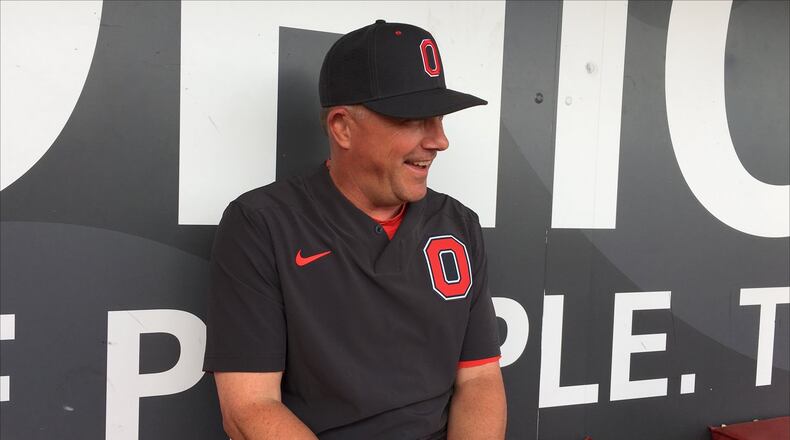College baseball was called off a month into the season, leaving not only seniors but also draft-eligible underclassmen in limbo when it comes to preparing for the MLB Draft.
“We have a handful of guys in our program that are that are staring the draft right in the eyes basically,” Ohio State coach Greg Beals said.
READ MORE: Kenton Ridge grad Beals wins second Big Ten baseball title in nine seasons at Ohio State
While pitcher Seth Lonsway and catcher Dillon Dingler could go early in the draft, pitchers Bayden Root and Griffan Smith and first baseman Conner Pohl were looking forward to being able to showcase themselves this spring in hopes of moving up in the eyes of scouts.
The Buckeyes’ season was cut short after 14 games, but that does not even tell the full story.
Ohio State also closed all athletics facilities and sent students home as part of nationwide efforts to slow the spread of the virus.
"That's the advice that we've given them — to go home, kind of press pause for a couple of days," said Beals, a Kenton Ridge grad who led Ohio State to the NCAA tournament last season and received a contract extension. "Hopefully the dust settles. Who knows what, when and how long that takes place. I'm sure you've seen that fitness centers around the state are closed, too, so even your Gold's Gym, LA Fitness — really wherever you might go locally, those are closed, too."
The coaching staff devised workout plans for their players designed both to maintain body weight and speed, “but obviously there’s going to be some side effects of this from a training standpoint,” Beals said.
The MLB draft is set for June 10-12, but The Associated Press reported it might be scuttled if ownership and the MLB players union can’t agree on work terms when and if the games are allowed to resume this summer.
If there is a draft, players will generally be picked based on the reputations they developed last fall and in previous seasons. That is not the end of the world, but it is not ideal, either.
“Many guys come back spring time and and really are able to showcase themselves and show the development that they’ve made,” Beals said.
On the bright side, Ohio State’s seniors — including Pohl, a first baseman from Arcanum — should be able to look forward to returning next season if they want to.
The NCAA announced it will grant “eligibility relief” for spring athletes, though it remains to be seen what that will look like.
“I do believe that the seniors at least will be granted another year of eligibility,” Beals said. “I think they’re trying to see if everybody is, but I really think they’re holding on tightly to the seniors being granted another year of eligibility. Obviously that is going to create a roster and a scholarship situation so I believe that along with that there will have to be some wiggle room there on the scholarship and the roster.
“I have no idea what that would look like at this point.”
While granting a group of players extra eligibility seems fairly straight forward, it is not.
In baseball, there are two potential headaches: Deciding how much to expand rosters when some teams would have more seniors coming back than others and determining how many scholarships a team can give out.
The former is a bigger issue in baseball than other sports because of the role fatigue plays in managing pitching staffs, and the latter is complicated by the fact most baseball players are on partial scholarships, unlike football and basketball players.
And what if the NCAA grants extra eligibility to everyone?
That would mean instead of one year with extra large rosters, schools who already have full freshman classes for this fall would be looking at a four- or five-year impact.
“Is our roster increased by six while someone else’s increases by eight and another by four so one team has two more players than Ohio State for the next year?” Beals said. “There are some variables that need to be worked out. I think it gets really complicated if they grant everybody another year of eligibility. Then you’re looking at a four to five year equation.”
Then, of course, there is the question of cost.
While the cancellation of the home schedule cost Ohio State revenue, it also meant fewer expenses.
While Beals has yet to begin to figure out how those will balance each other out, he knows bringing back his seniors could cost around $50,000 in scholarships.
“That could certainly play a factor in a lot of schools,” he said. “I spent a long time of my career at Kent State and Ball State and $50,000 is a big number in those equations. It’s certainly a big number at Ohio State as well.”
About the Author

